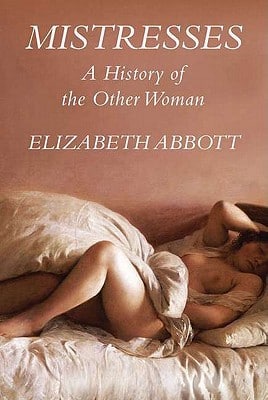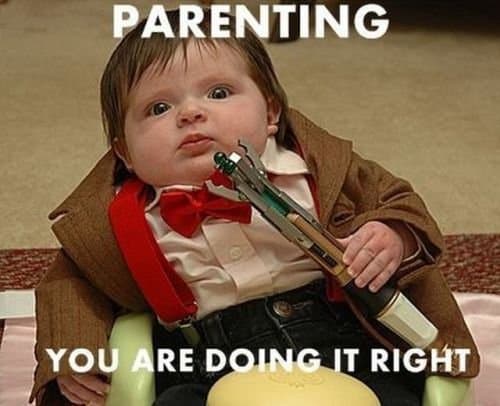Marital Infidelity: Then And Now
 Marital infidelity is nothing new as author Elizabeth Abbott conveys in her book Mistresses: A History of the Other Woman, containing 80 portraits of history’s most renowned mistresses. Beginning as far back as biblical Ishmael and Hagar, Abbott examines the complexities of “mistressdom” through King Solomon‘s 300-member harem to William Randolph Hearst‘s relationship with his west coast girlfriend to the many indiscretions of JFK.
Marital infidelity is nothing new as author Elizabeth Abbott conveys in her book Mistresses: A History of the Other Woman, containing 80 portraits of history’s most renowned mistresses. Beginning as far back as biblical Ishmael and Hagar, Abbott examines the complexities of “mistressdom” through King Solomon‘s 300-member harem to William Randolph Hearst‘s relationship with his west coast girlfriend to the many indiscretions of JFK.
Through her cultural study of the most notorious extramarital affairs, Abbott not only tells the story of some of history’s most marginalized women, but she also reveals how infidelity has transformed with our evolving times.
You write that “Mistressdom is inextricably linked with marriage…” Can you please say a little more about that?
Mistressdom is the institution that permits husbands to engage in romantic/erotic relationships without seriously jeopardizing their marriages. It is the institutionalized accommodation of the sexual double standard and the legal and social superiority of men. In pitting woman again woman, it protects the status of the wife and her children, by denying the mistress any claims against her lover and by bastardizing her children. In most cases, the law used to prevent men who wished to acknowledge and/or support this children with their mistresses from doing so.
You raise the point that husbands and wives were traditionally chosen to function as an economic unit and produce children, not to “quiver at each other’s touches” or “fulfill each other’s emotional needs.” Why then were men allowed to stray from their marriages to fulfill these needs while women were discouraged and even punished for doing so?
Two primary reasons. The first is that women had to be restrained from having extramarital (or premarital sexual) relations to guarantee that her husband’s bloodline was perpetuated and that she did not introduce another man’s seed as her husband’s. In fact, this happened often enough that it is common for the law to hold that any child born to a wife is her husband’s, even when that clearly or even admittedly is not the biological case. When a man strayed and procreated, the law enabled him to renounce his offspring, thereby preserving his estate for his legitimate children. The second reason is that male dominance was reinforced by denying this prerogative to women.
You write that the line between mistress and girlfriend has now been “blurred.” Can you please expand on that?
Because many mistresses today are self-sufficient and uninterested by the concept of being supported by their lover, an important element in the notion of mistressdom has changed. Also, the possibility of divorce, allowing a mistress to become her lover’s wife, also alters the dynamic.
How does mistressdom factor into today’s acceptance of open marriage among many contemporary couples?
An open marriage probably obviates the role of a mistress; it’d be difficult to see why a man with an open marriage would also want a mistress. Marriages with mistresses aren’t usually structured as open in the sense of mutual agreement.
Unlike history’s most notable mistresses, modern women are rarely financially dependent on their married lovers. Since money was so often an important factor for women in these extramarital relationships, how has the omission of financial dependance changed the landscape of infidelity?
Infidelity is now much more often about romantic and erotic love, especially for women. Many modern mistresses are self-supporting, with good incomes (unlike the working women of the past, who could starve on their terrible wages), and so are uninterested in a financial relationship with their lovers. Many even pride themselves on their financial independence or earn more than their lovers. That’s not to say they don’t want material tokens of their relationship, but what usually matters is the specialness of a gift, not its value.
How do today’s infidelities mirror that of 100 or 200 years ago?
Quite different! With divorce, especially no-fault divorce, a viable option for so many people, infidelities can have very different consequences, notably that they can cause divorce or, in jurisdictions with no-fault divorce, can lead to divorce. They can also lead to the establishment of new core unions because an unfaithful partner can marry his or her lover. Another major difference is that accessible, reliable birth control means (pretty much) eliminates the risk of an unwanted child. Does this prompt more women to have affairs? We are not sure because we don’t know and it’s likely unknowable how many wives were unfaithful centuries ago. But it certainly changes the parameters of any potential affair.
(photo:elizabethabbott.wordpress.com and booksamillion.com)





